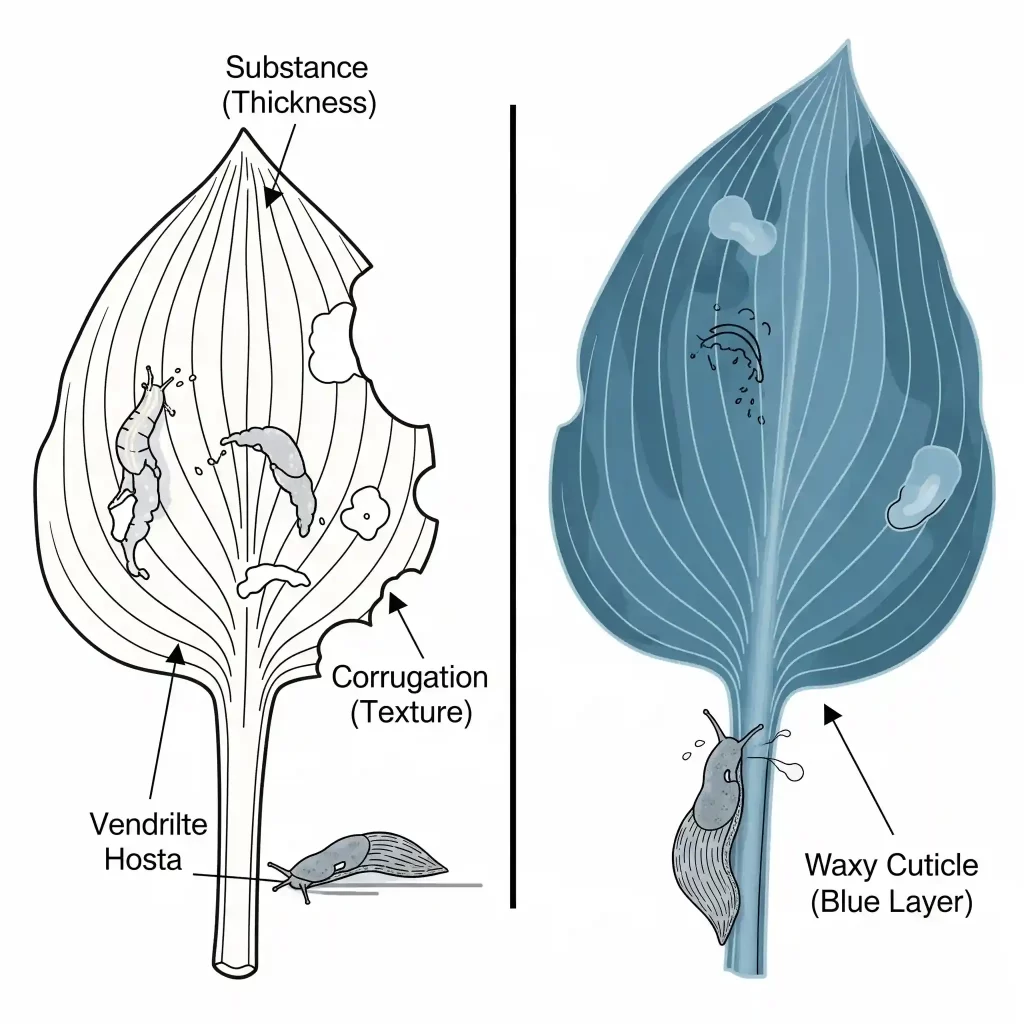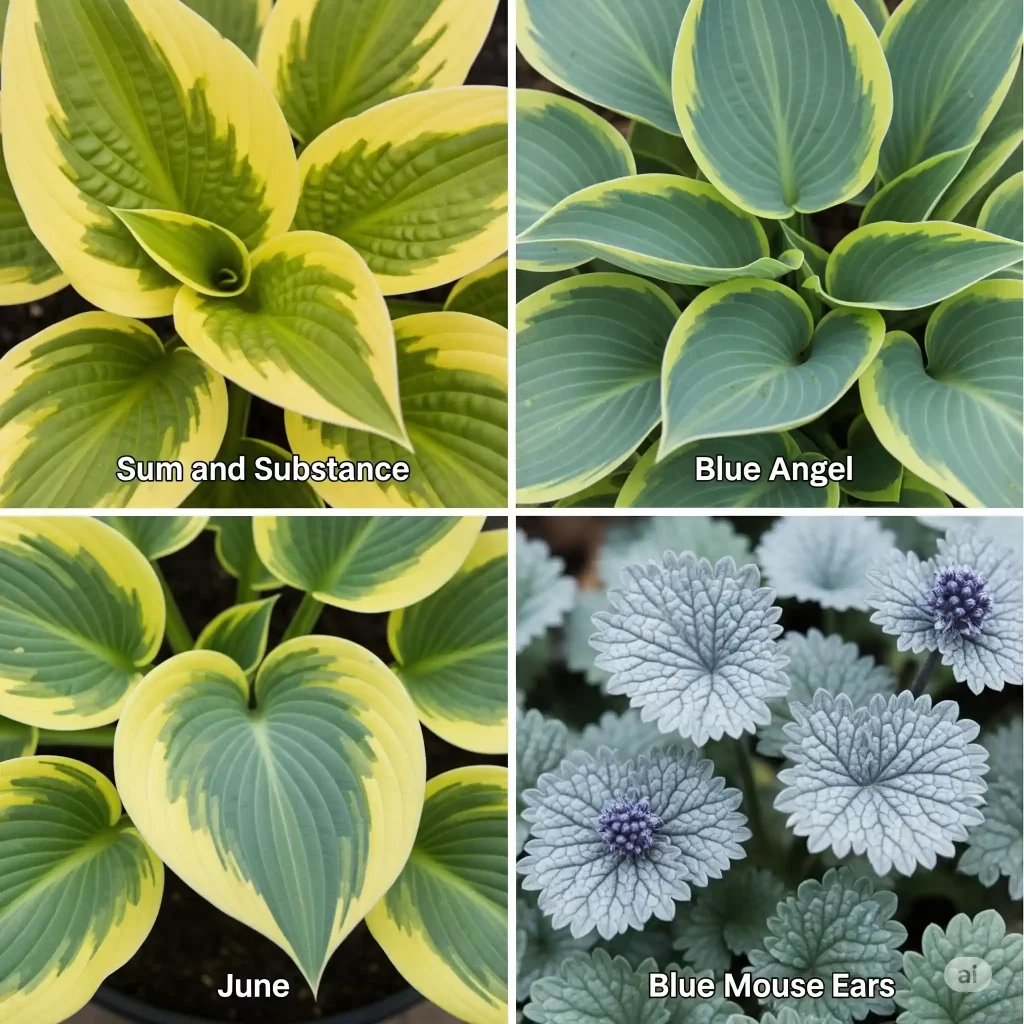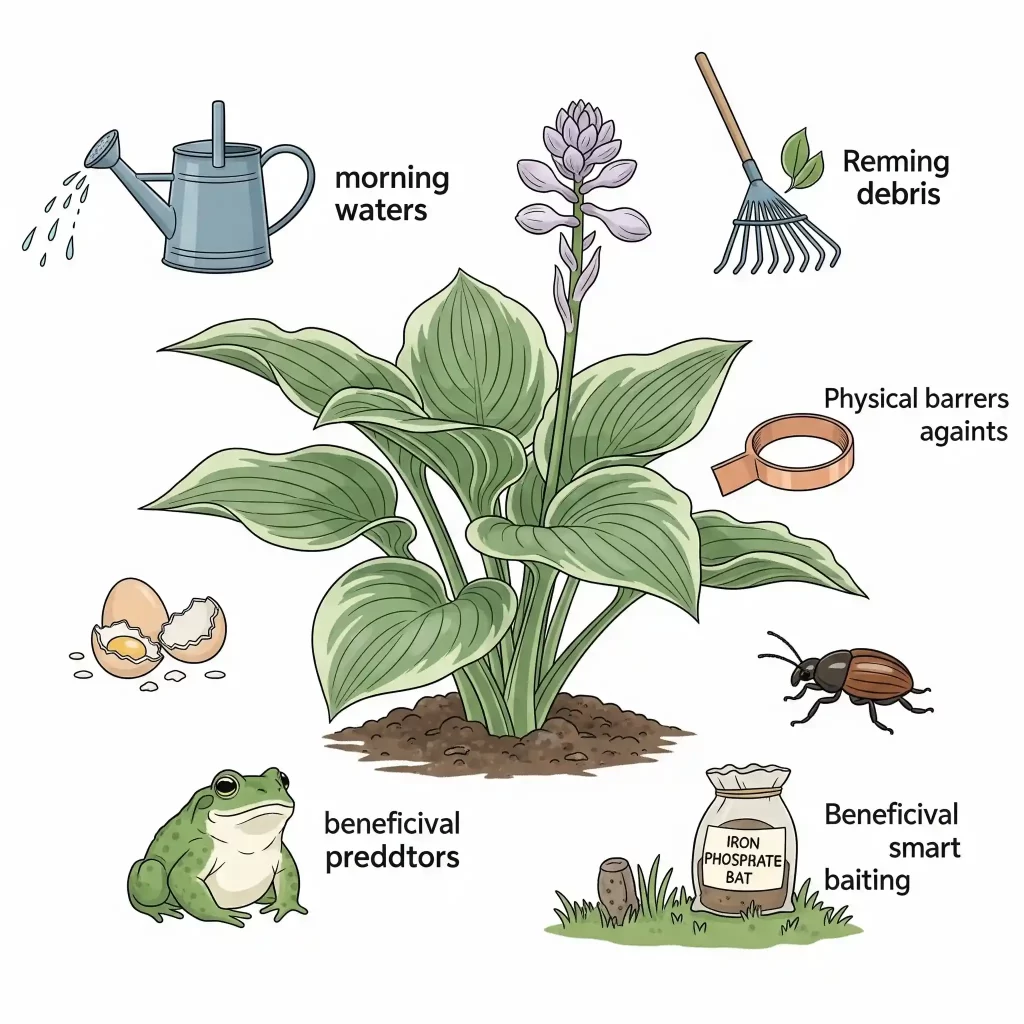Got a Shady Spot? These Hosta Varieties Will Brighten It Like No Other (and Slugs Hate Them!)
Every garden has one of those hard-to-reach shaded spots where the grass is thin and patchy and other flowers have a hard time growing and fading. It could be the long, dark strip on the north side of your house, the dry shade under a big maple tree, or the part behind the garage that is always wet. It’s easy to think of these places as lost causes, places where plants will never grow and will end up as mulch or dirt.
But what if you looked at that issue area as a chance? A chance to make a cool, green retreat with beautiful colors, dramatic textures, and a simple, peaceful shape. Hostas are the best plants on Earth for giving you this chance.
Hostas are the clear kings and queens of the shade garden because of their beautiful leaves. But for a lot of gardeners, their happiness doesn’t last long. Slugs are a well-known enemy that hides in the wet shadows. Every gardener wants to escape the heartache of seeing gorgeous, pricey hosta leaves turn into a shredded, hole-ridden mess overnight. You can feel like you’ve lost.
Here’s the key that sets successful gardeners apart from others who are frustrated: not all hostas are the same. Plant breeders who have been working hard for years have created amazing new types that are not only gorgeous but also quite strong. These “iron-clad” hostas were carefully chosen and crossed to have features that make them naturally unappealing to slugs. You can make the beautiful, low-maintenance shade garden of your dreams without having to use slug baits all the time if you pick the appropriate plant from the start.
From What I’ve Seen
I used to think that the shady north side of my house was a lost cause. Now, it’s my favorite section of the garden. It’s a nice, green place with big hosta leaves that make it look like a sanctuary. The secret wasn’t extra work, chemicals, or stress; it was picking the correct plants from the start.
The Science Behind Slug-Proof Hostas: Why Some Types Live and Others Don’t
Have you ever thought about why slugs will eat one hosta all the way down to the nub but leave the one next to it, only a few feet away, alone? It’s not luck; it’s science that gives you the answer. Even though slugs are simple, they know how to make things easy. They are slow eaters and like leaves that are soft, thin, and simple to chew. Certain botanical features have made the most slug-resistant hostas the least appealing meal for slugs. You will be able to pick a plant that will last a long time in the garden center if you know these things.
Three Ways a Hosta Can Protect Itself from Slugs
- Substance (Leaf Thickness): In the realm of hostas, “substance” refers to how thick and tough the leaf tissue is. Leaves that are thick, leathery, and nearly feel like a piece of thin cardboard are what makes a variety with good substance. Lignin, a strong, fibrous substance that makes wood stiff, is more concentrated at this density. The slug’s radula, which is its mouthpart, has a hard time tearing through this tough tissue. They move on to find an easier food since it’s just too much work for too little return.
- Corrugation (Texture): This is the puckered, seersuckered, or quilted texture on the leaf’s surface. It would be like trying to crawl over a mountain range for a small, soft-bodied slug that moves by sliding on a layer of slime. The terrain is rough and irregular, which makes it hard to glide smoothly over the leaf. The “valleys” also make dry spots that slugs, who need moisture all the time, will stay away from.
- The Waxy Cuticle (The Blue Layer): Some hosta types have a gorgeous, powdered blue tint on their leaves because of a waxy coating on the surface called a “bloom” or “glaucous” layer. This waxy layer has a lot of jobs for the plant, such keeping moisture in and bouncing back harmful sunlight. But it also tastes bad to slugs and is bitter. It’s a natural repellant that makes the leaf taste awful, which tells slugs to find something else to eat. It’s crucial to know that this waxy layer is fragile and can be rubbed off by heavy rain, watering from above, or even just touching it. This is why blue hostas frequently look greener later in the season.

Tip from an expert
You can really feel a hosta that is resistant to slugs. At the nursery, softly brush a leaf of a plant like “Sum and Substance” between your fingers. Then perform the same thing with a simple, thin green type like “Lancifolia.” You can see right away that the thickness and texture are different. The leaf that feels tough will nearly always be the better choice for keeping slugs away.
A Guide to Your Garden’s Light: Not All Shade is Created Equal
“Plant hostas in the shade” is a nice place to start, but it’s not enough. You need to learn about your personal garden and figure out what kind of shadow it has in order to have the brightest colors and healthiest plants. The color and health of a hosta are directly affected by the amount and quality of light it gets.
- Deep Shade (less than 2 hours of direct sun): This is the hardest type of shade to deal with. It is usually found on the north side of a building or under thick evergreen trees. A lot of plants won’t do well here, but hostas will. This is the best place for dark green kinds that are high in chlorophyll, which helps them get the most out of the little light they get. Blue hostas also do well here because the deep shadow keeps their waxy blue coating from melting off in the sun, which keeps that hue all season long.
- Dappled Shade (filtered sun all day): This is the best thing for hostas. It’s the perfect position. The light is like what you might see under a big, leafy tree like a maple, oak, or birch. The changing pattern of light and shadow gives the leaves enough energy to photosynthesize quickly and change color brilliantly, while also keeping them safe from the sun’s heat. This is the best condition for most types, especially those with delicate white or cream variegation that can easily burn.
- Partial shade and morning sun (2–4 hours of direct morning sun): This is the best place to get the brightest, most electrifying colors out of some hostas. The soft morning sun isn’t strong enough to burn the leaves, but it gives the vivid pigments in yellow and chartreuse types like ‘Stained Glass’ or ‘Guacamole’ the energy they need to “charge up,” making them look almost like they’re glowing. A lot of fragrant hostas also need this little bit of sun to bloom and smell good. But keep in mind that the strength of “morning sun” changes from place to place. Four hours of morning daylight in Maine is not the same as four hours of morning sun in Texas. Look at your garden and keep plants safe from strong sun after 11 a.m.
From What I’ve Seen
I had to reposition my “June” hosta three times before it was right. In deep dark, the blue and chartreuse colors were bland and not very bright. The edges of the delicate leaves become crispy under the strong midday light. It was the best place because it got beautiful, dappled light all day under a Japanese Maple. The location made all the difference, turning it become the showstopper it was meant to be.
The Iron-Clad Hosta Collection: Best Plants for a Garden Without Slugs
Are you ready to pick your plants? Stop using generic lists. This is a carefully chosen gallery of the best, most common, and most slug-resistant hostas, grouped by how they might help your garden.
The Chartreuse Spotlights: To Light Up Dark Areas
These kinds of plants are like living lightbulbs. Their bright chartreuse leaves shine in the darkest parts of the yard and look great next to blue and green hostas.
- “Sum and Substance”: The best hosta there is. The leaves are huge, thick, and heart-shaped, and they are a bright green to gold color. A full-grown clump can be 6 feet wide, which makes it a beautiful architectural example. The stuff it is made of is famous.
- “Paul’s Glory”: A work of art in color and shape. It comes out in the spring with a chartreuse center and a wide blue-green edge. As the season goes on, the center gets brighter and turns a dazzling gold. The leaves are very thick and have deep ridges.
- “Guacamole”: A type that grows quickly and smells good. The large, apple-green leaves with a deeper green edge look like the fruit it is named for. It needs some sun in the morning to get its best color and make its sweet-smelling white blossoms in the late summer.

The Blue Giants: For Strong, Architectural Statements
These big, blue hostas make everything feel tranquil and cool down other, more vivid plants. Because of their waxy coating, slugs hate them.
- “Blue Angel”: A real giant with gigantic, heart-shaped, powder-blue leaves that are deeply corrugated. It develops a huge, arching mound that stands out in the shade garden and is hard to forget.
- “Elegans”: A classic for a reason. The blue leaves of this hosta are very thick, wrinkled, and heart-shaped. It is the definition of a sturdy plant that won’t get eaten by slugs, and it has been a workhorse in gardens for decades.
- ‘Krossa Regal’: Known for its unusual, upright, vase-shaped shape. The long stems hold up its icy, blue-gray leaves, which gives it a look that is quite elegant and architectural, unlike most mounding hostas.
The Armored Variegation: For Strength and Design
These types show that you can have both harsh and detailed patterns. They have the best of both worlds: stunning colors and great substance.
- “June”: Is thought by many to be one of the most beautiful and flawless hostas ever created. The pointed leaves have a center that looks like a flame and is a bright chartreuse color, while the edge is a very wide, stable blue-green color. The leaves are very strong, and the color stays the same all season.
- “First Frost”: Is a sport of the popular “Halcyon.” It has frosty blue foliage with a creamy-yellow border. As its name says, it looks great from spring until the first frost, when it keeps its shape and color perfectly. The leaves are thick and strong.
- “Patriot”: Is a bold and vibrant pick. The centers have a rich green color, while the edges are a very wide, clear white. It grows quickly and its thick leaves keep slugs away.
The Small but Strong: Miniatures That Don’t Get Slugs
Do you not have room for a “Sum and Substance”? These small versions have all the slug-resistant qualities in a small packaging, making them great for borders, rock gardens, or pots.
- “Blue Mouse Ears”: Is a cute and very popular small animal. It makes a tight bunch of thick, spherical blue-green leaves that look a lot like mouse ears. It is well-known for being hardy and resistant to slugs.
Advice from an expert
When choose a variegated hosta, make sure the margin is wide. I have found that cultivars with a wide, sturdy margin, such as “First Frost” or “June,” are usually stronger and less likely to get slugs than those with a thin, wispy, or unstable edge.
A Plan for Controlling Slugs That Works Together
Even the toughest hostas might benefit from a multi-pronged defense plan in a garden that has a lot of slugs. A holistic Integrated Pest Management (IPM) method makes the environment less friendly to slugs on its own, instead of only using baits.
- Cultural Practices: This is the first and finest thing you can do to protect yourself. Don’t water your garden at night; do it in the morning. This lets the soil and plant leaves dry up by nighttime, when slugs are most active. Slugs need moisture to make the slime they use to move, thus a dry surface is a big problem for them. Also, be sure to routinely remove heavy layers of leaf litter, old mulch, or trash where slugs like to hide and lay their eggs during the day.
- Physical Barriers: Build a fence around plants that are very valuable or easy to damage. A ring of crushed eggshells, diatomaceous earth, or coarse sand around the base of the plant makes a sharp, rough barrier that slugs don’t want to cross. Diatomaceous earth works by scratching their fragile bodies, which makes them lose water. Copper tape is another very effective barrier because it gives slugs a small electric shock when they try to pass it.
- Encourage Predators: Create a balanced ecosystem. Toads, garter snakes, firefly larvae, ground beetles, and a lot of ground birds eat slugs. These natural allies will be more likely to make your garden their home and handle the pest management for you if you stay away from broad-spectrum insecticides.
- Smart Baiting: If you have to use baits, pick the right ones. If you have dogs, kids, or wildlife in your garden, iron phosphate baits are a far safer choice than traditional metaldehyde baits, which are more hazardous. Iron phosphate is a natural substance that poisons slugs’ stomachs and makes them stop eating and go back to die. When used as prescribed, it doesn’t hurt other animals.

Your beautiful, easy-to-care-for shade garden is waiting.
To solve a hard shady location, you don’t need to do more labor, use more chemicals, or get more upset. It’s not about working harder; it’s about working smarter. It’s about knowing how strong modern hostas are and leveraging that knowledge to your advantage.
You may make a beautiful, long-lasting garden with little effort by picking the proper plants for the amount of light they get and focusing on plants with thick, corrugated, or waxy blue leaves that protect them. Don’t be afraid of the shady parts; see them as a chance to create a cool, elegant, and naturally attractive retreat.
Your keys to success are:
- For the best color and health, choose the proper hosta for the right position. Make sure it gets the right amount of light.
- You can see toughness: choose plants with thick, wavy, or blue foliage that slugs don’t like.
- It’s better to use more than one strategy to control slugs, starting with watering in the morning.
- Accept your shade; it’s a chance to produce some of the most gorgeous leaf plants in the world.
Questions That Are Often Asked (FAQ)
Do you need to fertilize hostas? Not really. Hostas don’t need a lot of food and do well in normal garden soil. They normally only need a top-dressing of compost in the spring when the new shoots come up. In fact, using too much nitrogen fertilizer can be bad since it makes the leaves limp and floppy, which slugs like.
Why are the leaves on my hosta getting yellow? The answer changes with the seasons. In the middle of summer, yellowing leaves could mean that the plant is getting too much direct sunlight (sunscald) or not enough water. This is a regular part of the plant’s life cycle in late fall as it gets ready for winter. Let the leaves die back on their own.
Can I split my hostas? Of course! One of the easiest perennials to split is the hosta. The optimum time is in the early spring, when the young shoots, or “pips,” are just starting to come up. You can also split them up in the early fall. Just dig up the whole clump, cut it into pieces with a sharp spade or knife (make sure each piece includes at least a few pips), and then replant it. It is a terrific way to receive free plants!
What are the “pips” you talk about when you divide? The “pips” are the tightly rolled-up, spear-like shoots that come up from the ground in early spring. They look like tiny green or purple cones that are sticking up through the ground. It’s best to divide the plant at this point because the leaves haven’t opened up yet. This makes the plant easier to handle and less likely to get hurt or lose water.
Do deer eat hostas? Sadly, absolutely. Hostas are like a salad buffet for deer. Deer don’t care if your plants are resistant to slugs. If deer are a problem where you live, you’ll need to use repellents, netting, or fencing to keep your hostas safe.
What plants work well with hostas? Contrasting textures are the most important part of a stunning shadow garden design. Hostas have big, bold leaves, therefore you should place them with plants that have thin, feathery, or delicate leaves. Ferns, such as the Japanese Painted Fern or the Autumn Fern, are a classic choice. Heucheras, often known as Coral Bells, have a wide range of leaf colors and ruffled textures that are very attractive. Astilbes are a great companion for flowery plumes since they like the same wet, gloomy environments. Brunnera (Siberian Bugloss) is another great mate. Its heart-shaped leaves and clusters of tiny blue blooms make it stand out.

